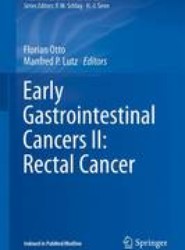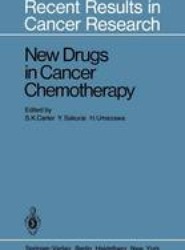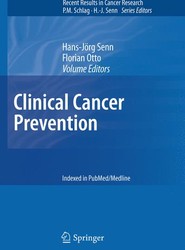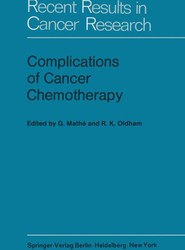(To see other currencies, click on price)
MORE ABOUT THIS BOOK
Main description:
The rationale for the design of structural analogues of a normal metabolite is that such compounds may interfere in the utilization or function of the metabolite. A compound which is effective in this respect may be called an antimetabolite. To be successful in chemotherapy of bacterial, viral, or tumor growth, an antimetabolite should adversely affect some vital metabolic reactions in the parasite or parasitic tissue without seriously endangering the host tissue. If a metabolic process of the offending growth is different from that of the host, it is likely that the metabolism or activity of a compound, structurally related to a metabolite involved in that process, will also be different in these cells. Such differences are useful for devising effective drugs with selective actions. Sulfanilamide, a structural analogue of para aminobenzoic acid, interferes with the utilization of this metabolite in the synthesis of folic acid, an essential factor for growth. Bacteria synthesize their own folic acid and are incapable of utilizing exogenously available folic acid. However, the situation is exactly opposite in the animal host. That is, animal tissues cannot synthesize folic acid and are absolutely dependent upon exogenous sources. These differences in metabolism make possible the use of sulfanilamide as a selective inhibitor of growth. Other antibacterial or antiparasitic drugs, such as penicillin (BURCHALL, FERONE and HITCHINGS, 1965) and inhibitors of dihydrofolate reductase (HITCHINGS and BURCHALL, 1965; HITCHINGS, 1964; BURCHALL and HITCHINGS, 1965) have analogous desirable selective toxicity effects.
Contents:
1 Introduction.- 2 Purines.- A. Metabolism of Purines.- B. Mechanisms of Action of Purine Analogues.- 6-Mercaptopurine (MP).- 6-[(l-Methyl-4-nitro-5-imidazolyl)thio]purine (Imuran or Azathioprine).- 9-?-D-Ribofuranosyl-6-methylthiopurine (6-Methylthio- purine ribonucleoside, MeMPR).- 2-Amino-6-mercaptopurine (6-Thioguanine, thio-G).- 4-Hydroxy (3, 4-d) pyrazolopyrimidine (Allopurinol).- 8-Azaguanine (aza-G).- 9-?-D-Arabinofuranosyladenine (Arabinosyladenine, ara-A).- 9-?-D-Xylofuranosyladenine (Xylosyladenine, xyl-A).- 3 Pyrimidines.- A. Metabolism of Pyrimidines.- B. Mechanisms of Action of Pyrimidine Analogues.- 6-Azauridine (6-aza-UR).- 5-Azacytidine (5-aza-CR).- 5-Azaorotic acid (5-aza-OA).- 5-Fluorouracil (FU), 5-Fluorouridine (FUR), and 5-Fluoro- 2?-deoxyuridine (FUdR).- 5-Trifluoromethyl-2?-deoxyuridine ("Trifluorothymidine", F3TdR).- 5-Iodo-2?-deoxyuridine (Iododeoxyuridine, IUdR).- 5-Bromo-2?-deoxyuridine (Bromodeoxyuridine, BUdR)..- 5-Hydroxyuridine (HO-UR).- 5-Aminouridine (H2N-UR).- 1-?-D-Arabinofuranosylcytosine (Arabinosylcytosine, ara-C).- 4 Nucleoside Antibiotics.- Tubercidin.- Toyocamycin.- Sangivamycin.- Formycin (Formycin A) and Formycin B.- Cordycepin (3?-Deoxyadenosine).- 3?-Amino-3?-deoxyadenosine(3?-H2N-3?-dAR).- Showdomycin.- 5 Conclusion.- References.
PRODUCT DETAILS
Publisher: Springer (Springer-Verlag Berlin and Heidelberg GmbH & Co. K)
Publication date: April, 2012
Pages: 128
Weight: 236g
Availability: Not available (reason unspecified)
Subcategories: General Practice
From the same series
Friedhelm Raue
Thomas Ried
Christian Wittekind
Florian Otto
Markus W. Buchler
C. Stroszczynski
Manfred Dietel
H.-J. Senn
Otmar Schober
Jean-Nicolas Vauthey
Elmar Detering
Richard P. Baum
G. Mathe
R. Gross
Florian Otto
Uwe M. Martens
Michail Ignatiadis
Georges Mathe
M. S. Griem
Jack Cuzick
Michael Gnant
Ute Goerling
Hans-Jorg Senn
Werner H. Kirsten
F.A. Langley
Kuan-Teh Jeang
Janusz Jankowski
J. Bernard
Thomas Moehler
Andrea Tannapfel
S.K. Carter
R. S. Nelson
Kerry S. Courneya
Rolf D. Issels
Hans-Jorg Senn
Florian Otto
W. Fischbach
Umberto Veronesi
Otmar Schober
Paul M. Schneider
Hans-Jorg Senn
Wolfgang Tilgen
Jean-Nicolas Vauthey
Richard P. Baum
J. L. Hayward
W. H. Kirsten
Henry T. Lynch
Georges Mathe
G. T. Pack
Leon Goldman
Charles G. Moertel
R.G. Freeman
L. Manuila
Agnes Glaus
Rudiger Liersch
Richard Schindler
Uwe M. Martens
W.A. Fuchs
Michail Ignatiadis
Edward S. Meek
Merle Mizell
Jean Lindenmann
Pavel Koldovsky
Enrico Anglesio
Georges Mathe
Hans-Jorg Senn
James H. Goldie
Donald Metcalf
Siegfried Seeber
Israel Penn
B. Sokoloff
Manfred Schwab
E. Grundmann
H.-D. Pape
Robert S. Nelson
G. Mathe
J. Lange
G. Bonadonna
J. Szymendera
H. B. Marsden
K. E. Stanley
E. Grundmann
C. Bohuon
Pierre Denoix
A. C. Templeton
Ekkehard Grundmann
Michael Wannenmacher
Ivan Damjanov
Wolf-Dieter Ludwig
Friedhelm Raue
M. L. Jacobs
H.K. Muller-Hermelink
Rita Engenhart-Cabillic
E. Grundmann
Peter M Schlag
E. Grundmann
Ekkehard Grundmann
G. Mathe
Donald Metcalf
S. Brunner
F. F. Holmes
G. Mathe
G. Mathe
Pierre Band
Stephen C. Schimpff
K. Schwemmle
Michael Gnant
K. Hoffken
Friedhelm Raue
H. R. Scheurlen
Aron Goldhirsch
H. Acker
Hans-Jorg Senn
F. G. J. Hayhoe
William Duncan
E. Thiel
Hans-Jorg Senn
K. Musshoff
Hans-Jorg Senn
A. Rossi-Fanelli
Peo C. Koller
Volker Diehl
K. Hoffken
H.-J. Senn
Bruce S. Schoenberg
G. St. Arneault
S.K. Carter
B. Henningsen
J. Hekmatpanah
G. Mathe
E. Grundmann
Hans-Jorg Senn
G. Mathe
Sam Brunner
Hans-Jorg Senn
V. Hofmann
Michael Wannenmacher
G. Wagner
Hans-Jorg Senn
Rudolf Pichlmayr
Frank M. Torti
Michael Wannenmacher
William Duncan
G. Mathe
M. Bamberg
H.-P. Lohrmann
E. Grundmann
Niels Neymark
Peter M Schlag
P. Koldovsky
G. Nass
W. Duncan
Ekkehard Grundmann
Richard P. Gallagher
Hans-Jorg Senn
W. Duncan
W. Duncan
S.K. Carter
Michael Molls
Sam Brunner
Peter Boyle
Maurizio Ponz de Leon
U. Reinhold
Gunter Burg
K. Hoffken
H.-J. Senn
F.W. Schildberg
Beat Thurlimann
Janusz Jankowski
Thomas Moehler
Andrea Tannapfel
Kerry S. Courneya
H.-J. Senn
Per-Ulf Tunn
Andreas von Deimling
Antonella Surbone
Ursula Kapp
Hans-Jorg Senn
Santiago Gonzalez-Moreno
Hanno Riess
Paul M. Schneider
Uwe M. Martens
Rudiger Liersch
Renzo Brun del Re
Andreas von Deimling
Ursula Kapp
Per-Ulf Tunn
Hanno Riess
Antonella Surbone
Manfred Dietel
Santiago Gonzalez-Moreno
Louis Denis
H.-J. Senn
C. Stroszczynski






























































































































































































































